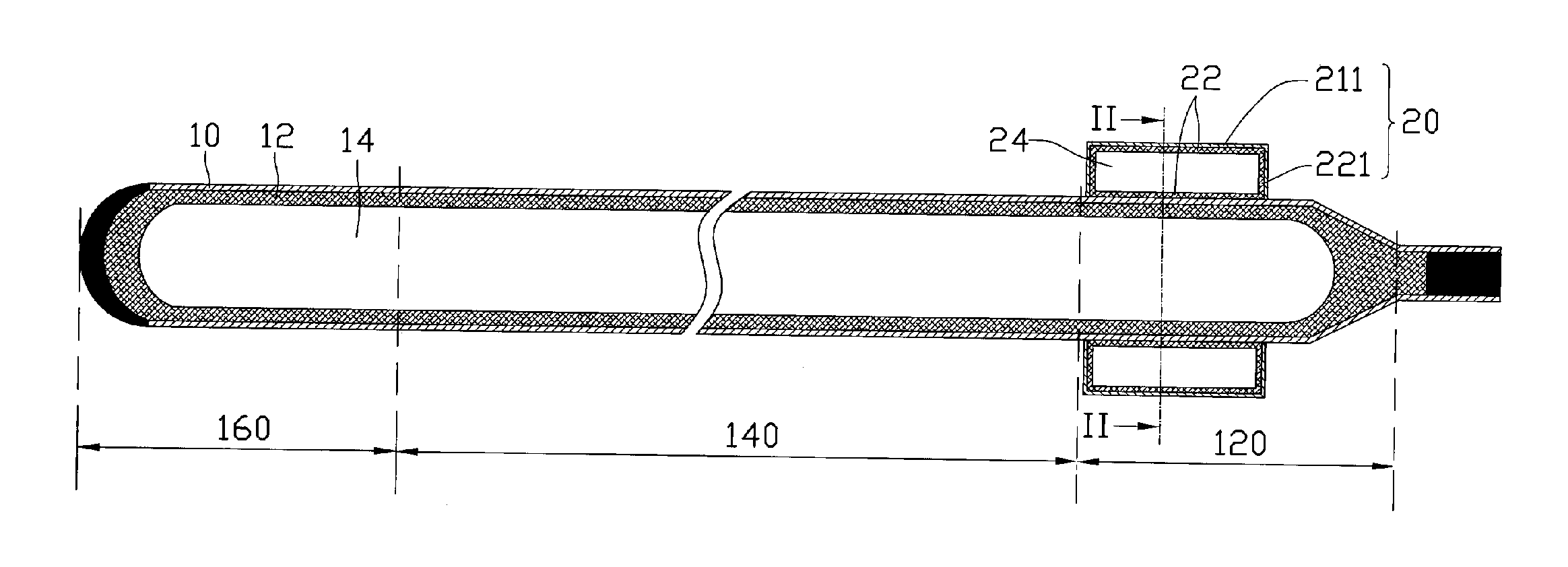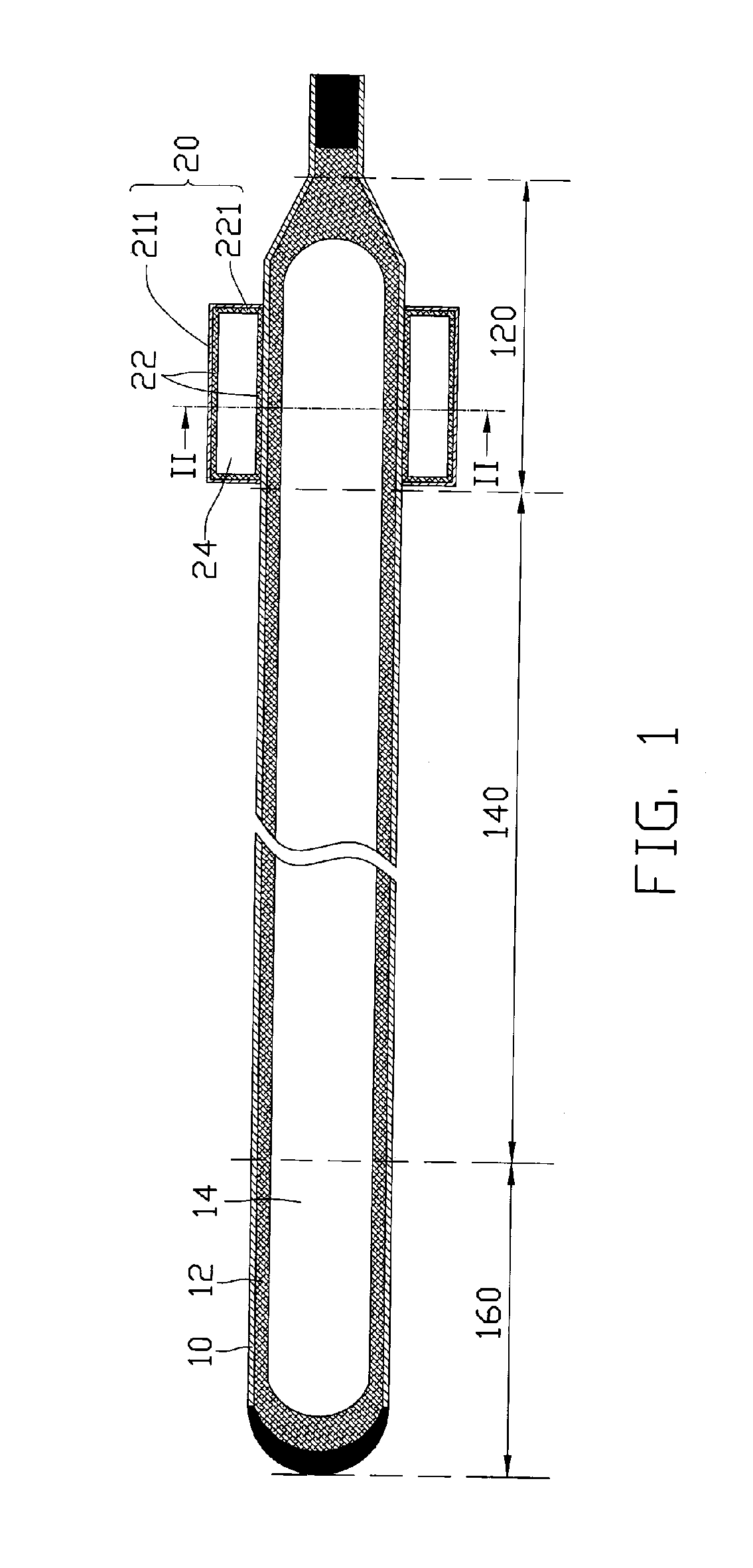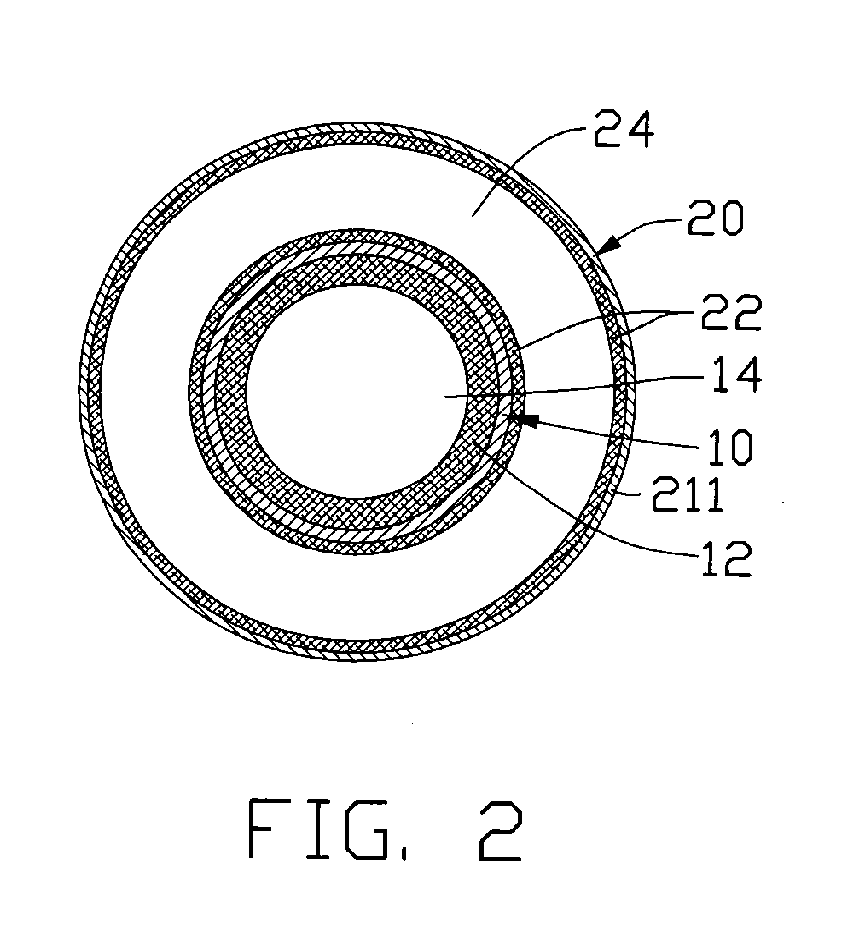Heat pipe
a heat pipe and heat pipe technology, applied in the field of heat pipes, can solve the problems of reducing the speed of the condensed liquid in the return to the evaporating section, limiting the maximum heat transfer capacity (qmax) of the heat pipe, and heat pipe often suffers dry-out problems, so as to increase the heat absorbing area enhance the maximum heat transfer capacity of the heat pipe, and reduce heat resistance
- Summary
- Abstract
- Description
- Claims
- Application Information
AI Technical Summary
Benefits of technology
Problems solved by technology
Method used
Image
Examples
Embodiment Construction
[0017]FIGS. 1 and 2 show a heat pipe in accordance with one embodiment of the present invention. The heat pipe has a cylindrical configuration and includes a metal casing 10 made of highly thermally conductive materials such as copper or copper alloys, a first working fluid (not shown) contained in the casing 10 and a first capillary wick structure 12 arranged in an inner surface of the casing 10. The casing 10 includes an evaporating section 120 at one end, a condensing section 160 at the other end and an adiabatic section 140 arranged between the evaporating section 120 and the condensing section 160. A sealed heat reservoir 20 is mounted on the evaporating section 120. A vapor channel 14 is defined along an axial direction of the heat pipe and is located at a center of the casing 10. The vapor channel 14 is surrounded by an inner surface of the first capillary wick structure 12 so as to guide vapor to flow therein.
[0018]The heat reservoir 20 has a hollow cylindrical configuration...
PUM
 Login to View More
Login to View More Abstract
Description
Claims
Application Information
 Login to View More
Login to View More - R&D
- Intellectual Property
- Life Sciences
- Materials
- Tech Scout
- Unparalleled Data Quality
- Higher Quality Content
- 60% Fewer Hallucinations
Browse by: Latest US Patents, China's latest patents, Technical Efficacy Thesaurus, Application Domain, Technology Topic, Popular Technical Reports.
© 2025 PatSnap. All rights reserved.Legal|Privacy policy|Modern Slavery Act Transparency Statement|Sitemap|About US| Contact US: help@patsnap.com



